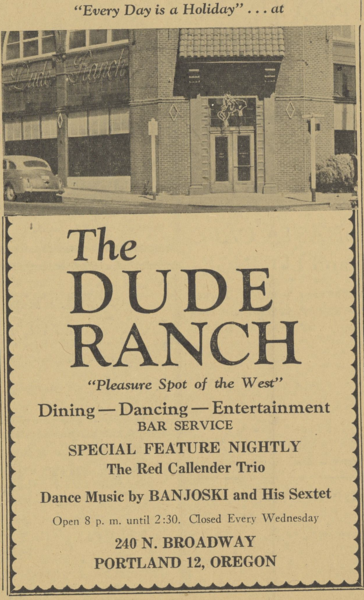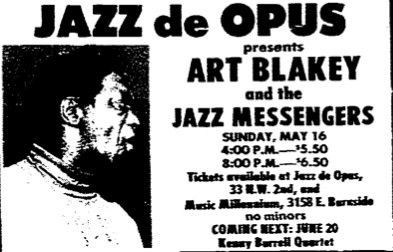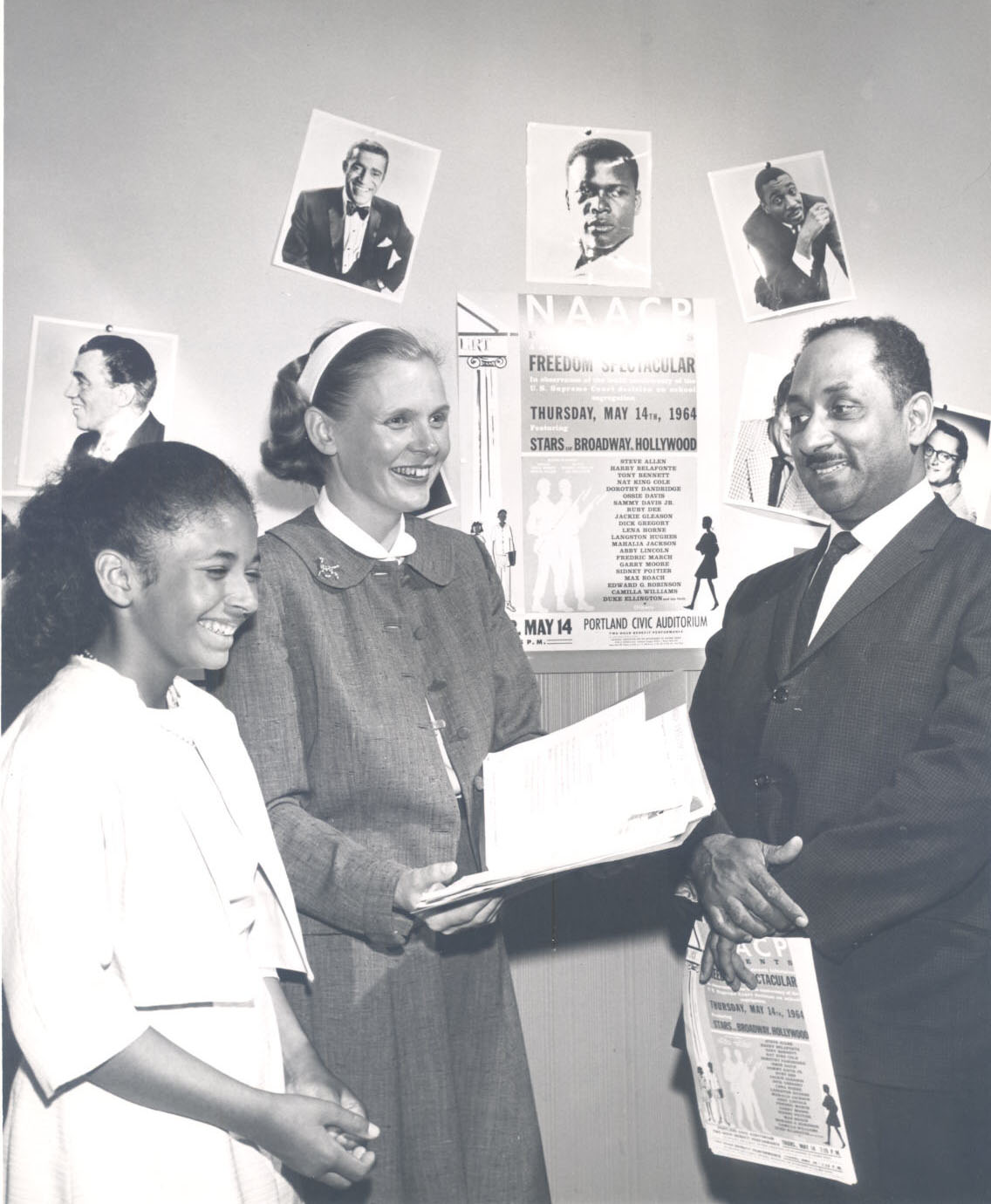The Dude Ranch was Portland’s premier jazz venue in the days just after World War II, when jazz clubs proliferated along North Williams Avenue, the center of the city’s African American community. In the early post-war years, racism, redlining (banks' refusal to lend money to people living in certain areas), and restrictive real estate practices forced African Americans to cluster in this small area. One of the few benefits of the overcrowding was an unusually high concentration of nightclubs, with names like Paul’s Paradise, the Frat Hall, and the Savoy, most of which featured jazz.
The local scene was as dynamic as almost any in the country, and people went to Williams Avenue from all over the city to hear particular musicians. Locals called the Dude Ranch “the night club of startling surprises” because its owners, Sherman Pickett and Pat Patterson—known affectionately as Pic and Pat—seemed capable of booking anybody. Among those who performed there were Lionel Hampton, Art Tatum, and the Nat “King” Cole trio.
The club’s name was reflected in its decor. Below an ornate ceiling, the walls were covered with murals of black cowboys, and the waitresses wore cowgirl outfits with holsters bearing cardboard pistols. Patrons danced on a mirrored floor in front of a raised bandstand, while diners ate on a balcony and photographers roamed the room. Signs on the tables flanking the bandstand read: “You ain’t nothing till you’ve had your photo taken at the Dude Ranch.”
The Dude Ranch crowd, according to Portland jazz historian Bob Dietsche, included “pin-striped politicians with neon ties, Hollywood celebrities and glamour queens in jungle red nail polish and leopard coats, feathered call girls and pimps in fake alligator shoes, zootsuited hipsters, and side-men from Jantzen Beach” as well as “Bugsy Siegel-like characters in sharkskin suits and broad Panama hats, in from St. Louis for a friendly game of cards or dice” upstairs. It was, “the Cotton Club, the Apollo Theatre, Las Vegas and the wild west rolled into one.”
Lively as the Dude Ranch was, however, no night equaled December 5, 1945, when impresario Norman Granz brought his touring jam session, Jazz at the Philharmonic, to town and played there. That night, legendary saxophonist Coleman Hawkins led a group that included trumpeter Roy “Little Jazz” Eldridge, bassist Al McKibbon, and a twenty-five-year-old pianist with a “lightning-like right hand” who was soon to usher in the bebop age, Thelonious Monk. “Never before in the history of the northwest has there been as much jazz music played per square minute by any group,” Bill McClendon proclaimed in The Observer, Portland’s African American newspaper.
A shooting or maybe the gambling or, as Dietsche proposes, the mixing of races on the dance floor prompted city authorities to close the club a few months later. It reopened a short distance away but was never the same. Most of the aging structures in the North Williams neighborhood fell victim to late twentieth-century urban renewal, but the brick building that housed the original Dude Ranch at 240 North Broadway still stands. It is now part of the Leftbank Project, offering community office space, a cafe, and a brewery.
-
![]()
Advertisement for The Dude Ranch in the Observer, July 31, 1945.
Courtesy The Observer and Lavenderearlygrey, Wikimedia Commons
Related Entries
-
![Jazz de Opus]()
Jazz de Opus
One of the definitive nightclubs in the Portland jazz scene, Jazz de Op…
-
![William McClendon (1915-1996)]()
William McClendon (1915-1996)
William McClendon was a writer, journalist, intellectual, activist, and…
Related Historical Records
Map This on the Oregon History WayFinder
The Oregon History Wayfinder is an interactive map that identifies significant places, people, and events in Oregon history.
Further Reading
Dietsche, Robert. “Where Jump Was a Noun.” Open Spaces 2.1 (1999): 30-35.
Dietsche, Robert. Jump Town: The Golden Years of Portland Jazz 1942-1957. Corvallis: Oregon State University Press, 2005.






